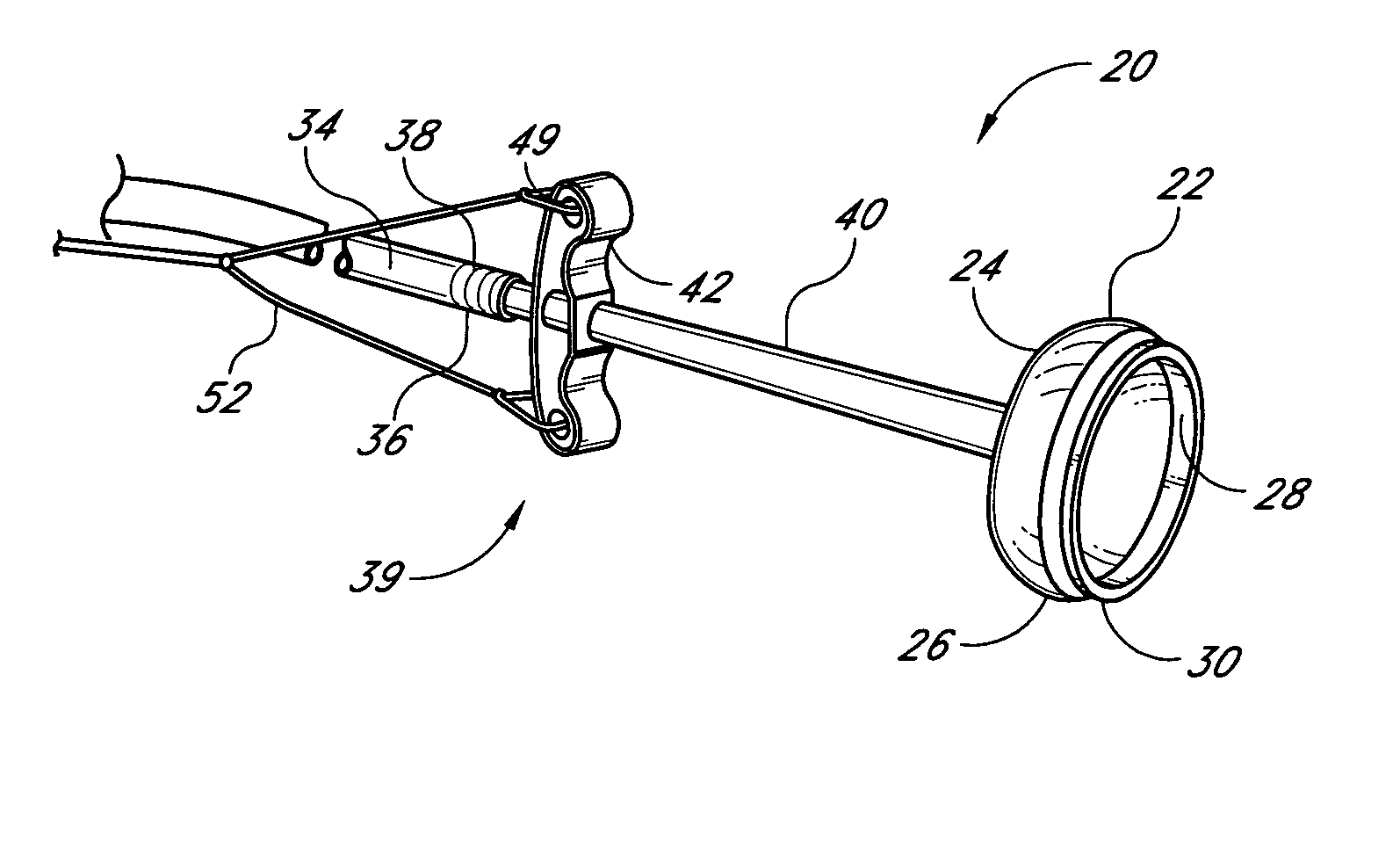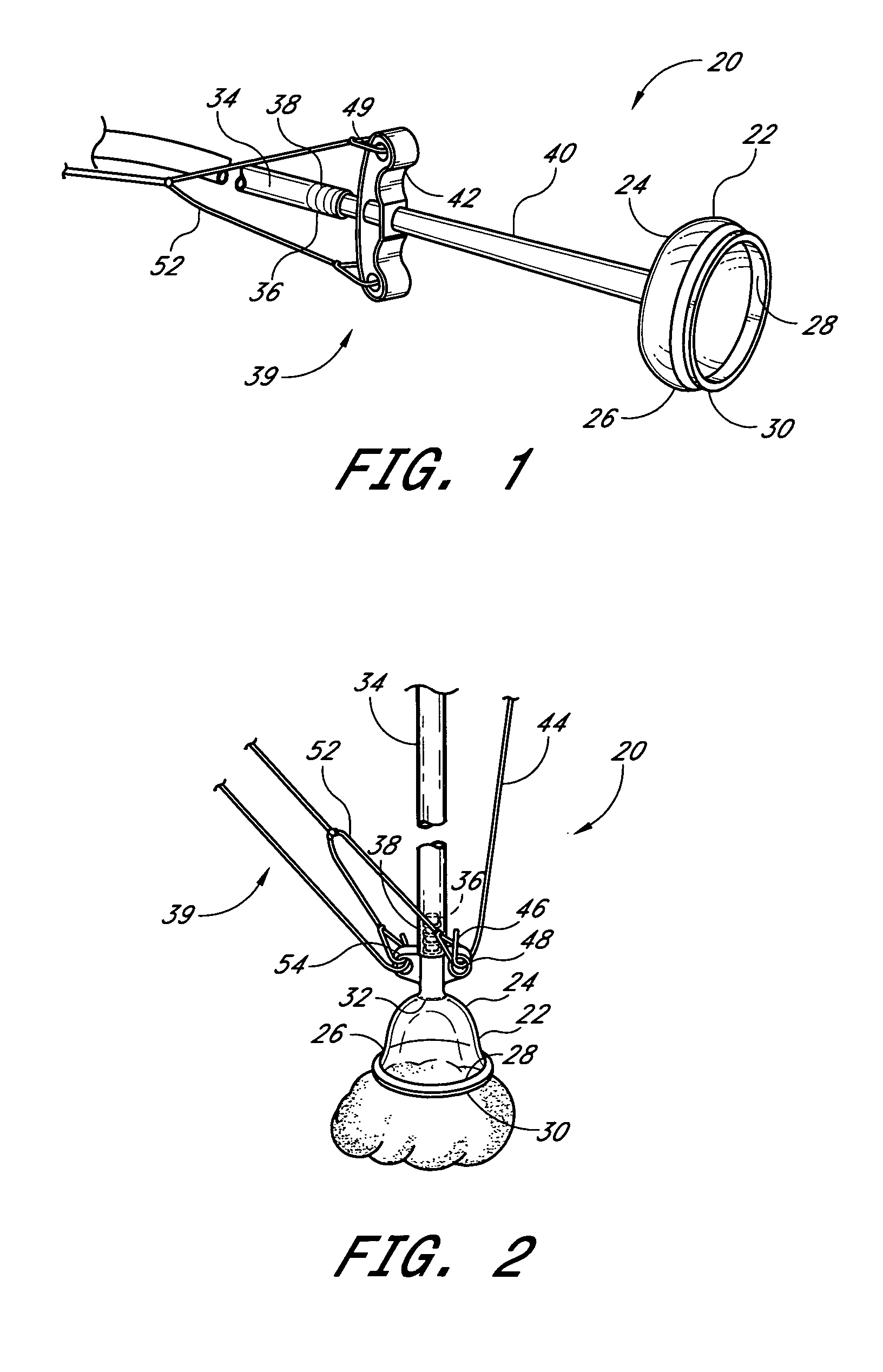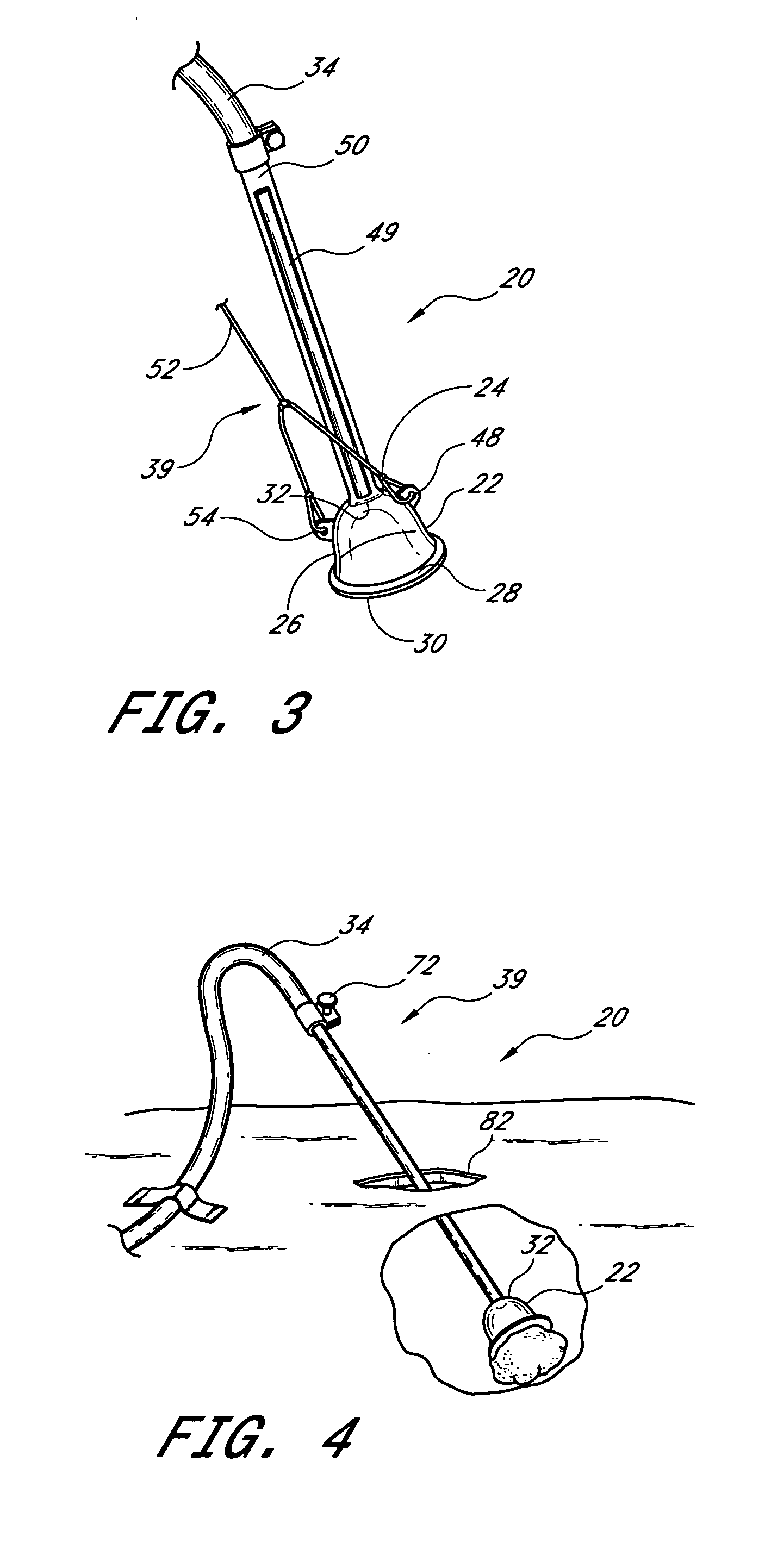Vacuum instrument for laparotomy procedures
a laparotomy and vacuum technology, applied in the field of surgery, can solve the problems of increasing the risk of complications, and increasing the cost of surgical procedures, and achieve the effect of slowing down or arresting bleeding and less trauma
- Summary
- Abstract
- Description
- Claims
- Application Information
AI Technical Summary
Benefits of technology
Problems solved by technology
Method used
Image
Examples
Embodiment Construction
[0024] Turning now to the drawings, there is shown in FIGS. 1 and 2 vacuum devices 20 of two different embodiments constructed in accordance with teachings of the invention. The device 20 includes a suction cup 22 having a back wall 24 from which a side wall 26 depends, the side wall 26 forming a basal opening 28 at a side wall edge 30 for placement on an organ, or other tissue. In order to minimize the possibility of damage or trauma to the body tissue, the side wall edge 30 may display a substantially rounded edge. It will be appreciated by those of skill in the art that this rounded edge may likewise facilitate sealing of the cup 22 against tissue, particularly in a mushroom-shaped cup 22 as illustrated in FIG. 1, inasmuch as the rounded edge may readily conform to certain irregularities in the tissue surface and maintain a sealing engagement as the tissue is drawn into the cup 22.
[0025] The cup 22 may be of a range of sizes and of various compositions, depending upon the partic...
PUM
 Login to View More
Login to View More Abstract
Description
Claims
Application Information
 Login to View More
Login to View More - R&D
- Intellectual Property
- Life Sciences
- Materials
- Tech Scout
- Unparalleled Data Quality
- Higher Quality Content
- 60% Fewer Hallucinations
Browse by: Latest US Patents, China's latest patents, Technical Efficacy Thesaurus, Application Domain, Technology Topic, Popular Technical Reports.
© 2025 PatSnap. All rights reserved.Legal|Privacy policy|Modern Slavery Act Transparency Statement|Sitemap|About US| Contact US: help@patsnap.com



